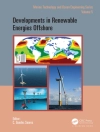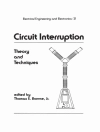The book is written as primer hand book for addressing the
fundamentals of smart grid. It provides the working definition the
functions, the design criteria and the tools and techniques and
technology needed for building smart grid. The book is needed
to provide a working guideline in the design, analysis and
development of Smart Grid. It incorporates all the essential
factors of Smart Grid appropriate for enabling the performance and
capability of the power system. There are no comparable books which
provide information on the ‘how to’ of the design and
analysis.
The book provides a fundamental discussion on the motivation for
the smart grid development, the working definition and the tools
for analysis and development of the Smart Grid. Standards and
requirements needed for designing new devices, systems and products
are discussed; the automation and computational techniques need to
ensure that the Smart Grid guarantees adaptability, foresight
alongside capability of handling new systems and components are
discussed. The interoperability of different renewable energy
sources are included to ensure that there will be minimum changes
in the existing legacy system.
Overall the book evaluates different options of computational
intelligence, communication technology and decision support system
to design various aspects of Smart Grid. Strategies for
demonstration of Smart Grid schemes on selected problems are
presented.
Sobre o autor
JAMES MOMOH, Ph D, is Professor in the Department of Electrical and Computer Engineering and Director of the Center for Energy Systems and Control at Howard University. Dr. Momoh also serves as Principal Consultant at Bonneville Power Administration. He has authored or coauthored several books, including Operation and Control of Electric Energy Processing Systems and Economic Market Design and Planning for Electric Power Systems, both from Wiley-IEEE Press. Dr. Momoh is dedicated to the development of interdisciplinary research and education programs in systems engineering, energy systems, and power economics.












